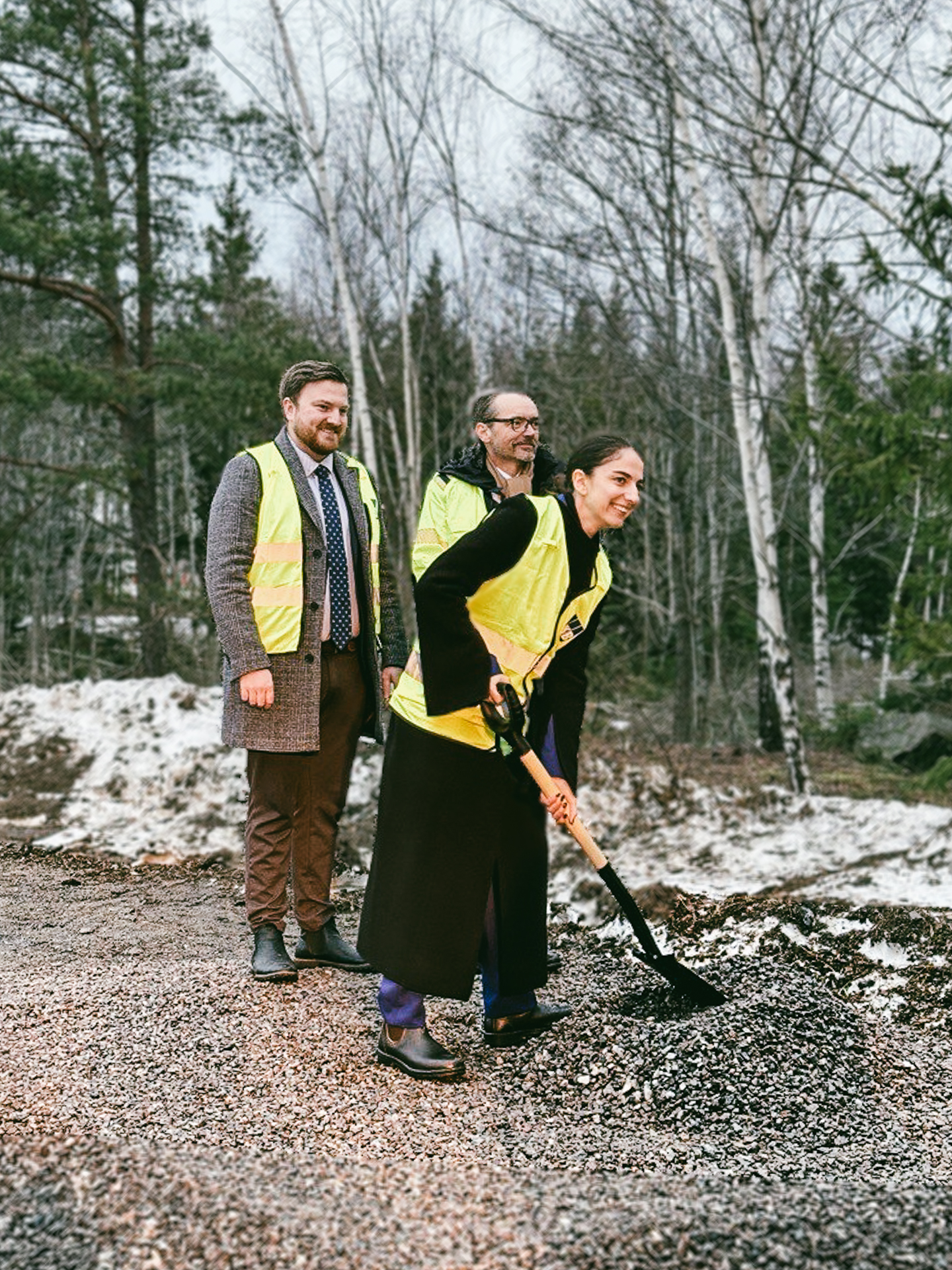Sweden begins construction of final disposal facility for spent nuclear fuel – with only Finland ahead
As the second country in the world, Sweden has started the construction of a final disposal facility for spent nuclear fuel. The ground was broken in Forsmark in the municipality of Östhammar in mid-January. The construction of a deep geological final disposal repository started in Finland’s western neighbour following a 40-year period of research and development activities. The start of the project was announced by the Swedish Nuclear Fuel and Waste Management Company SBK (Svensk Kärnbränslehantering).

Climate and Environment Minister Romina Pourmokhtari's shovel strike marked the start of the construction of Sweden's nuclear fuel repository in Forsmark.
In Finland, Posiva’s final disposal facility has already been completed and the Trial Run of Final Disposal is currently ongoing. According to plans, the final disposal of the first canisters will take place already in mid-2020s. The exact start date has not yet been set.
Sweden faces quite a long construction period before final disposal can begin. The launch of the construction project was possible after receiving the environmental permit granted by the Swedish Land and Environment Court in the autumn of 2024.
Preparatory work above ground will take the first two years including the construction of, for example, a rock mass storage, a water treatment plant and a bridge over the cooling water canal. Some forest clearing will also be required on the construction site.
SKB estimates that the construction work will take at least ten years. After that, the repository will be extended tunnel by tunnel up till the 2080s.
- This is a historic day for the Swedish nuclear waste program. The start of the work is an important step for a final solution for spent nuclear fuel in Sweden. This sees us creating good conditions for continued fossil-free electricity production, commented Stefan Engdahl, Chief Executive Officer of SKB, on the first project milestone in the press release.
Slightly larger than ONKALO®
The final disposal repository will reach to a depth of around 500 metres under the sea and the area of the repository will cover a total of 2.4 square kilometres which equals 44 football fields. Unlike in Finland, the encapsulation plant will not be constructed in the same complex with the repository, but 500 km more south in Oskarshamn.
When fully extended, the repository will contain more than 60 kilometres of tunnels. The tunnels will hold approximately 12,000 tons of spent nuclear fuel. According to plans, about 6,000 canisters will be deposited in the tunnels. Each 25-ton canister can accommodate two tons of spent fuel. Each of the canisters will be protected by a buffer of bentonite clay – just like we do in Finland.
For the sake of comparison, Posiva’s ONKALO will contain about 50 kilometres of tunnels when fully extended and will house 6,500 tons of spent fuel in 3,250 canisters. The land area of ONKALO extends over about two square kilometres. In Finland, the tunnels are not excavated under the sea and they are located at a depth of 400-450 metres.
SKB is owned by Vattenfall with a 36 percent share, Forsmarks Kraftgrupp 30%, OKG Aktiebolag 22% and Dydkraft Nuclear Power with a 12% share. Posiva is owned by Teollisuuden Voima with a 60% share and Fortum with a 40% share.
Text: Pasi Tuohimaa
Photo: Svensk Kärnbränslehantering